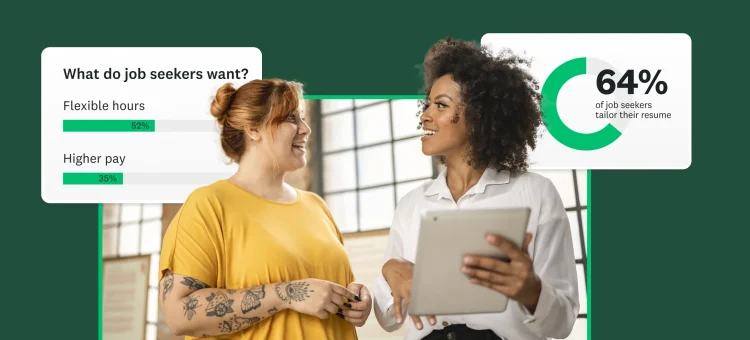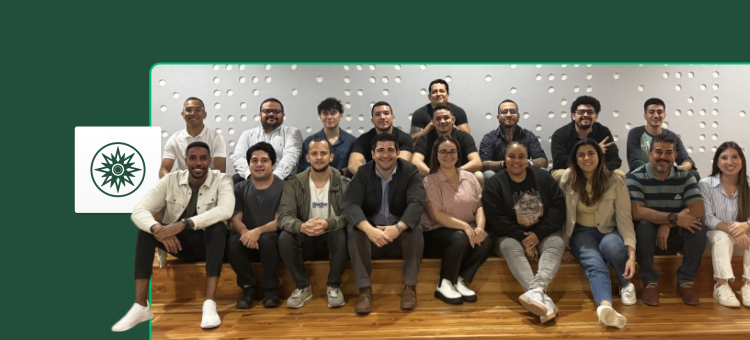Ever wondered what your coworkers are really thinking? Or how they work at home when no one is around to watch them? Well, grab your coffee and settle in, because we've got the inside scoop on what's really going on in the American workplace. We surveyed workers across the country, and let's just say, they didn't hold back.
To explore how people are experiencing work at this moment in time we've surveyed thousands of people to explore the trends that are shaping today's workforce and whether people are really using data to make smarter decisions at work.
For this study, we decided to have a bit more fun and ask them to tell us, anonymously, about the things they wished they could say about today's workplace.
The great job hunt? More like a ghost hunt.
For those seeking new jobs and opportunities, it’s getting cold out there. As in, people are getting iced out.
A whopping 53% of job seekers have been ghosted after an interview. That's right, folks, it seems that some employers are taking their cues from bad Tinder dates.
But our intrepid job seekers aren't giving up. In fact, 65% are tailoring their resumes for each job application. Now that’s dedication. And what are they looking for? Flexible hours top the list at 55%, followed by higher pay at 35%.
The email sign-off saga
Now, let's talk about something really important: how people end their emails. The winner? "Thanks" at 30%. But here's where it gets interesting. We asked how people wish they could sign off, and the responses were... colorful:
“do not bother me again”
"bye leave me alone"
"Girl, bye”
Tell us how you really feel.
Meeting derailment, a new national pastime?
Speaking of things that make us want to scream into the void, 35% of workers say their coworkers always derail meetings to talk about unrelated topics. Always. Try not to let that sink in too much, or calculate how many hours per year you’ve wasted hearing about the latest episode of your least favorite TV show.
Remote work: The good, the bad, and the pajamas
We explored the ins and outs of working from home in our study on workplace trends, but we uncovered some notable findings in this study that were also more than a little distressing. For example, the top challenges people face working from home today were:
- Difficulty taking breaks or disconnecting (49%)
- Feeling pressure to be constantly available (45%)
- Feeling isolated (34%)
But it's not all bad. People are using their saved commute time for exercising, chores, family time, eating, and sleeping. Everything in life has tradeoffs—even working from home.
Generational divide: Let's talk email
Gen Z, our digital natives, say they’re slacking when it comes to job applications. Only 43% tailor their resumes for every job, compared to 100% of millennials.
Other generational divides might surprise you. Take the most commonly reported email sign-offs for example:
- Gen Z (18-29): "Sincerely" (How formal!)
- Everyone else: "Thanks" (Short, sweet, and to the point)
What makes people tick (or explode)
Want to make your employees happy? Here's the secret sauce:
- Flexible hours
- Positive feedback from managers
- Solving problems
And the cherry on top? Minimal or no meetings. Shocking, we know.
There you have it—the unvarnished truth about the American workplace. It's a wild world out there, full of ghosting employers, derailed meetings, and dreams of telling your boss to "peace out." But hey, at least we're all in this together, right?
Now, if you'll excuse us, we need to change our email signature to "Girl bye" and practice our best "I'm totally paying attention in this meeting" face.
Which questions will you dare to ask? To plan your next survey, start here.
Methodology: This SurveyMonkey study was conducted September 16-19, 2024 among a sample of 490 adults in the US. Respondents for this survey were selected from a non-probability online panel. The modeled error estimate for this survey is plus or minus 2.0 percentage point. Data have been weighted for age, race, sex, education, and geography using the Census Bureau’s American Community Survey to reflect the overall demographic composition of the United States.



